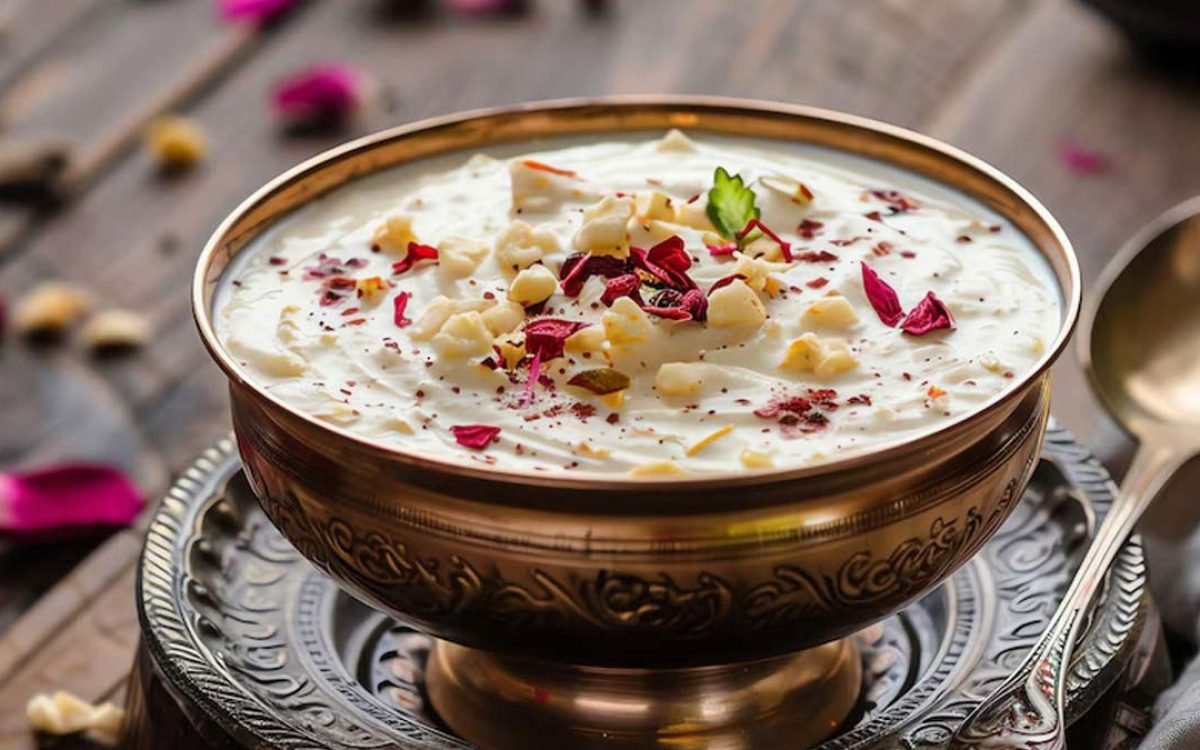Sharad Purnima, also known as Kojagiri Purnima, marks a significant celebration in Hindu culture. Celebrated on the full moon night of the Hindu month of Ashwin, it is a festival that symbolizes the end of the monsoon season and the onset of cooler weather. Traditionally, families come together under the clear, bright sky to honor this full moon with various customs and rituals. One of the most cherished traditions of Sharad Purnima is the preparation of kheer, a creamy and sweet rice pudding, which holds a deeper meaning when it is left under the moonlight before being consumed. This ancient practice is not only ceremonial but also believed to carry health benefits passed down through generations.
The Historical Significance of Sharad Purnima
Sharad Purnima has deep roots in ancient India. According to Hindu mythology, it is believed that on this night, the moon shines with all sixteen Kalas (or aspects) that bestow the moon with its full creative energy. In Vedic texts, the moon is associated with beauty, tranquility, and nourishment. Ancient scriptures suggest that the brightness of the moon on Sharad Purnima is particularly auspicious, and it has been a time for centuries where Hindus pay homage to this celestial event through fasting, feasting, and prayer.
Sharad Purnima is also closely linked with the divine dance or “Raasa Leela” of Lord Krishna, where it is said that on this night, Krishna performed the cosmic dance with his devotees, the Gopis, in Vrindavan under the moonlight. The festival has been observed not only for its religious significance but also for its connection to health and agriculture. Historically, Sharad Purnima is considered a harvest festival, where farmers express gratitude for the bounty received, making it an essential event for rural communities in ancient India.
The Tradition of Kheer: A Dish with Historical Roots
Kheer, a dessert that has been enjoyed for thousands of years in India, is believed to have originated in ancient Hindu temples where rice and milk were cooked together as offerings to the gods. This simple yet delightful dessert was often prepared during religious rituals, symbolizing prosperity and abundance.
The custom of making kheer on Sharad Purnima is thought to have evolved from these ancient offerings. Families would gather to prepare the rice pudding with love and care, letting it simmer to perfection. The recipe for kheer has remained consistent over the centuries, using rice, milk, sugar, and sometimes saffron or cardamom for flavor. However, what makes this dish unique during Sharad Purnima is the practice of leaving it outdoors under the full moon overnight.
The Ritual of Moonlight: Science and Spirituality Intertwined
The act of leaving kheer under the moonlight is not just symbolic; it’s deeply connected to ancient beliefs about the moon’s healing properties. According to Ayurveda, the moon is associated with coolness, nourishment, and a soothing effect on both the mind and body. It is thought that on Sharad Purnima, the moon’s rays possess special cooling properties that can be absorbed by food, thus improving its taste and health benefits.
This belief is echoed in various cultures that view moonlight as a purifier. In ancient times, it was believed that the moonlight on Sharad Purnima had a particularly potent effect, enhancing the spiritual and physical well-being of those who participated in the rituals. Families who left their kheer under the full moon believed that the dish absorbed this celestial energy, making it not only tastier but more nutritious.
While these beliefs stem from spiritual traditions, modern science supports the idea that moonlight affects our environment. Studies on circadian rhythms show that moonlight can influence sleep, mood, and even plant growth. While no specific scientific study has confirmed the nutritional enhancement of food left under moonlight, the practice continues to thrive, blending ancient wisdom with modern-day celebration.
The Health Benefits of Eating Kheer on Sharad Purnima
Kheer is not only a delicious treat but also a highly nutritious dish. When we look at the ingredients individually, it’s easy to see why kheer has been a part of Indian culinary tradition for centuries.
1. Milk:
Milk is the base of kheer and is rich in calcium, which is vital for bone health. It is also a source of high-quality protein, which helps repair tissues and build muscle. Milk contains essential vitamins like Vitamin D and Vitamin B12, contributing to overall health. Ayurveda considers milk a cooling and nourishing substance, which aligns perfectly with the ethos of Sharad Purnima.
2. Rice:
Rice, the primary ingredient, is a great source of carbohydrates, which provide energy. In Ayurvedic traditions, rice is considered a “sattvic” food, meaning it promotes calmness, purity, and balance. The slow-cooking process used to make kheer enhances the digestibility of rice, making it a wholesome and light dish.
3. Nuts and Dry Fruits:
Kheer is often garnished with a variety of nuts and dry fruits like almonds, cashews, pistachios, and raisins. These add a burst of flavor and crunch, but more importantly, they are packed with nutrients. Nuts are rich in healthy fats, fiber, and antioxidants, which are beneficial for heart health. They also provide a good dose of protein, contributing to the overall nutritional profile of the dessert.
4. Moonlight’s Influence:
According to ancient Ayurvedic wisdom, the practice of leaving kheer under the moonlight adds an extra layer of benefits. It is believed that the moonlight enhances the cooling and nourishing qualities of the milk and rice, making it an ideal dish for soothing the digestive system and calming the mind. While scientific evidence on this is sparse, the symbolic act of honoring the moon’s power remains a revered custom.
Sharad Purnima Kheer Recipe: A Tradition You Can Try at Home
To partake in this timeless tradition, here’s a simple kheer recipe that you can make and leave out under the moonlight:
Ingredients:
• 1 liter of full-fat milk
• 1/4 cup of Basmati rice (soaked for 30 minutes)
• 1/2 cup of sugar
• 2-3 cardamom pods, crushed
• A pinch of saffron (optional)
• 10-12 almonds and cashews, chopped
• 1 tablespoon of raisins
Instructions:
1. Boil the milk in a heavy-bottomed pan.
2. Once the milk begins to boil, reduce the heat and add the soaked rice.
3. Stir occasionally to prevent the rice from sticking to the pan. Let the mixture simmer until the rice is fully cooked and the milk thickens.
4. Add sugar and crushed cardamom pods, stirring until the sugar dissolves.
5. Garnish with saffron, nuts, and raisins.
6. Once the kheer is ready, let it cool slightly. Place it outdoors under the moonlight for a few hours or overnight to absorb the lunar energy.
7. The next morning, share this moon-blessed dessert with your loved ones.
Conclusion
Sharad Purnima is not just about gazing at the moon or relishing delicious kheer; it’s a celebration that bridges the gap between health, spirituality, and tradition. By preparing kheer and leaving it out under the moonlight, we honor the ancient wisdom that connects us to nature and the cosmos. Whether you believe in the moon’s power or simply enjoy the ritual, the practice carries the warmth of togetherness, reminding us of the beauty of shared traditions.









